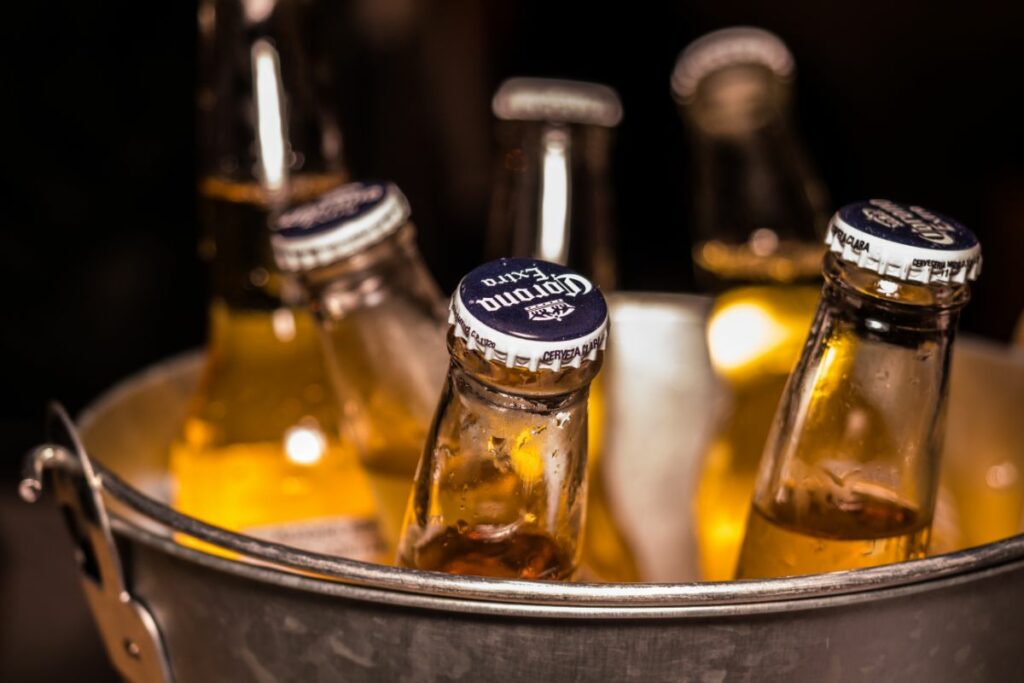The proof system was fully introduced around the mid-1850s in America as a measurement of alcohol content. However, proof has been used to measure alcohol content in beverages since the 1500s in England.

It can be different depending on where you are, especially between America and France, even Canada. One aspect remains the same, the higher the proof, the higher the alcohol content.
In this guide, we will ask; what does proof mean in alcohol? We will also look at why the alcohol content is measured by proof and the origins of the proof system.
What Proof Means In Alcohol
In America, proof simply means the alcohol by volume, also known as ABV, doubled up. For instance, a whiskey that is known to be 30% ABV will have a proof of 60. If it measures 35% ABV then you can expect a proof of 70 to be noted on the label.
This can get confusing but remember that the 100-proof spirits should have an ABV of at least 50% which still makes them very alcoholic.
It is worth noting that alcohol proof is a measure of alcohol in terms of how much ethanol is contained in an alcoholic beverage.
Measuring proof has been used to determine whether a spirit is the real deal or has been watered down since the 1500s though the tests have improved over time.
That measurement has been definitely updated to provide a more accurate measurement of the amount of alcohol present by a number or percentage.
Why The Alcohol Content Is Measured By Proof
The alcohol content is measured by proof as a percentage based on the total volume of that beverage.
For instance, a measure of beer should have between three and five percent ABV while you can expect triple the ABV for white wine. Already, you know that white wine should be more alcoholic than beer.
Going even further, you can expect a 12oz beer that has an ABV of 5% to have around the same amount of alcohol present as a 1.5oz vodka shot with a 40% ABV in America.
There is even a Code of Federal Regulations that sets out a requirement for liquor labels to state the ABV percentage in America.
A statement of the proof should be provided but is not required, but if it is included it should be placed close to the ABV number on the label.
If you do look at the spirit labels on bottles in America, you should still see the proof level while it remains more popular for journalists to state the alcohol content as proof rather than using the ABV.
In Canada, alcohol labelings are even more different. Since 1972, alcoholic beverages have been labeled with ABV rather than proof.
As you may expect, the proof system is more readily used in measuring the alcohol content of hard liquor.
This is where you will see the higher ABVs from whiskey, vodka, and rum which should all have a decidedly higher ABV than wine and beer.
The Origins Of The Proof System

The origin of the proof system comes from England way back in the 1500s and follows a rather crude methodology.
Essentially, the government in England would place a higher tax on those liquors which had a decidedly large amount of alcohol.
Their method of finding this out involved soaking a gun pellet with the alcohol and finding out if it could set fire and burn gunpowder.
The proof was whether the gunpowder lit up as it would show that the alcoholic content was proven to be sufficiently high.
The gunpowder system was not hugely accurate as it failed to define several variable factors in the test itself.
These could include the grain size of the gunpowder, there was also a lack of definition on how long the gunpowder sat in the alcoholic liquid.
Towards the end of the 17th century, England set about creating tests for measuring alcohol based on gravity and then density which used more scientific methodology.
This crude system of using gunpowder lasted until around 1816 when a more precise measurement was devised. First, the proof threshold was set at 57.06% which was deemed accurate enough.
The measurements also involved those markers of density and gravity which were then standardized in 1952.
Due to the threshold, a 100 proof spirit will have an ABV of around 57% with that proof ratio to ABV of around four to seven though you can times the ABV by just 1.75 to work out the proof.
Final Thoughts
Knowing what proof means in alcohol is important as you can easily forget what it means based on the country you are in.
If you are looking to get inebriated quickly then head for a hard liquor that has a high ABV such as vodka or whiskey.
Should you want to remain relatively sober then stick to low ABV beverages like beer or hard seltzers that should take longer to drink.
Also remember that sugar can mask alcohol content so liqueurs may be easier to drink without you realizing it which can get problematic.
Frequently Asked Questions
France uses a slightly different method of measuring proof which is on the degrees Gay-Lussac scale, named after the French chemist.
This is now known as the OIML scale which translates to the Organisation Internationale de Métrologie Légale.
Essentially, ABV is measured in a one-to-one ratio. If a spirit has a 90% ABV then the proof will also be 90%.
The European Union follows the OIML scale too to measure the strength of alcohol by mass and volume. When the proof measurement is done, the water and alcohol mixture should have a temperature of around 20°C (68F).
- StockHouseBrewing.com is being acquired by MomentumBrewHouse.com - October 24, 2023
- MomentumBrewHouse.com Acquires EmpiricalBrewery.com - August 31, 2023
- How Many Calories Are In A Bottle Of Beer? - May 24, 2023
